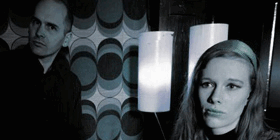
VCF (Voltage-Controlled Filter)
VCF (Voltage-Controlled Filter)
A Brief History
The VCF, or Voltage-Controlled Filter, is a type of electronic filter that can be used to alter the frequency spectrum of a signal. VCFs are used in a wide variety of electronic music synthesizers, drum machines, and other electronic instruments.
The Early Years
The first VCFs were developed in the early 1960s by electronic music pioneers such as Robert Moog and Don Buchla. These early VCFs were analog devices that used vacuum tubes or transistors to generate their signals.
The 1970s
In the 1970s, digital VCFs began to be developed. Digital VCFs offered a number of advantages over analog VCFs, including greater accuracy and stability.
The 1980s
VCFs became a standard feature on many electronic music synthesizers and drum machines in the 1980s. VCFs were used to create a variety of sounds, including low-pass filters, high-pass filters, and band-pass filters.
The 1990s and Beyond
VCFs continue to be a popular and versatile tool for electronic musicians. VCFs are used to create a wide variety of sounds, including:
Filter sweeps: VCFs can be used to create filter sweeps, which are a type of effect that sweeps a filter across a frequency range. Filter sweeps can be used to create a variety of sounds, such as sweeps, risers, and falls.
Resonance: VCFs can be used to create resonance, which is a type of effect that amplifies the frequencies that pass through the filter. Resonance can be used to create a variety of sounds, such as growls, squeals, and screams.
Other effects: VCFs can be used to create a variety of other effects, such as wah-wah, phase, and flanging.
The Elements of a VCF
VCFs typically have the following elements:
Cutoff frequency: The cutoff frequency of a VCF is the frequency at which the filter begins to attenuate the signal. The cutoff frequency of a VCF is typically measured in Hertz (Hz).
Resonance: The resonance of a VCF is the amount of amplification that occurs at the cutoff frequency. The resonance of a VCF is typically measured in decibels (dB).
Filter type: VCFs typically offer a variety of filter types, such as low-pass filters, high-pass filters, and band-pass filters.
Other features: VCFs may also offer other features, such as keyboard tracking, envelope tracking, and modulation input.
VCF Applications
VCFs can be used in a wide variety of applications, including:
Sound shaping: VCFs are often used to shape the sound of a synthesizer. VCFs can be used to create a variety of sounds, such as smooth, mellow sounds or harsh, aggressive sounds.
Effects: VCFs can be used to create a variety of effects, such as filter sweeps, resonance, wah-wah, phase, and flanging.
Experimentation: VCFs are a versatile tool that can be used to create a variety of sounds.
VCFs in Electronic Music
VCFs are a fundamental component of electronic music. VCFs are used to create a wide variety of sounds in a variety of electronic music genres, including:
Synthesizer music: VCFs are often used to create the sounds of synthesizers in electronic music genres, such as electronica, techno, and house.
Drum machines: VCFs are often used to create the sounds of drum machines in electronic music genres, such as techno and house.
Experimental music: VCFs are a versatile tool that can be used to create a variety of sounds in experimental music.
Conclusion
The VCF is a powerful tool that can be used to create a wide variety of sounds in electronic music. VCFs are a valuable addition to any electronic musician's toolkit.
Additional Information
The term "VCF" is a portmanteau of "voltage-controlled filter."
VCFs are typically classified as analog or digital.
Analog VCFs use vacuum tubes or transistors to generate their signals.
Digital VCFs use digital circuitry to generate their signals.
VCFs are an essential component of many electronic music synthesizers.
Posted by November 17th, 2023
Comment
